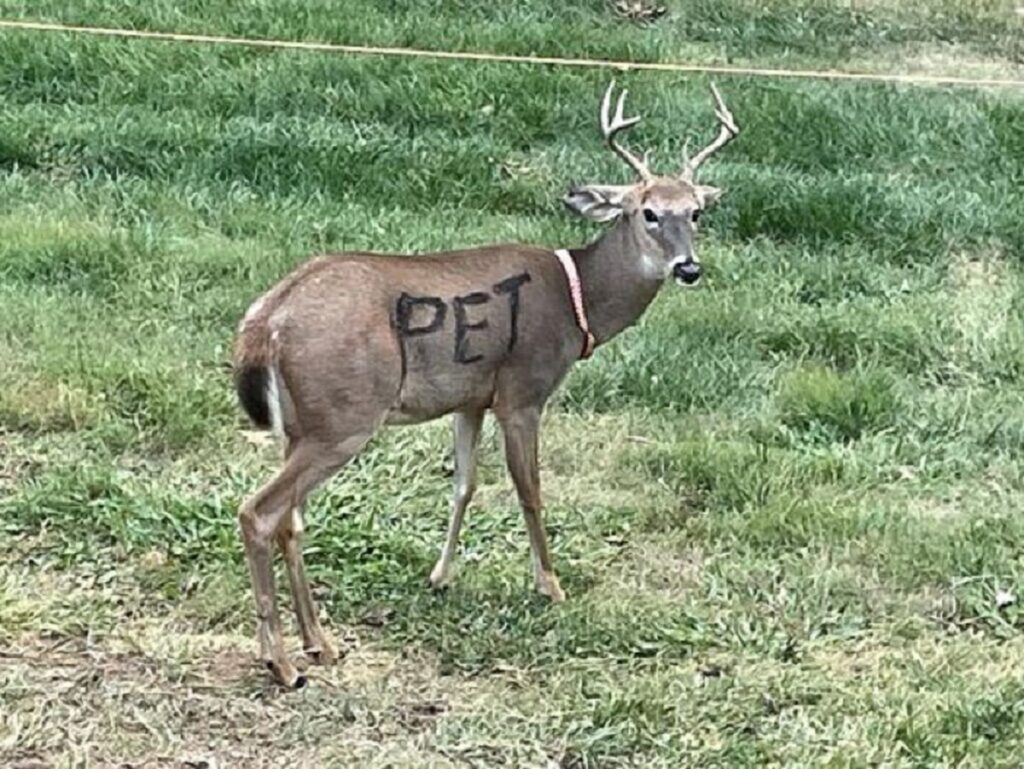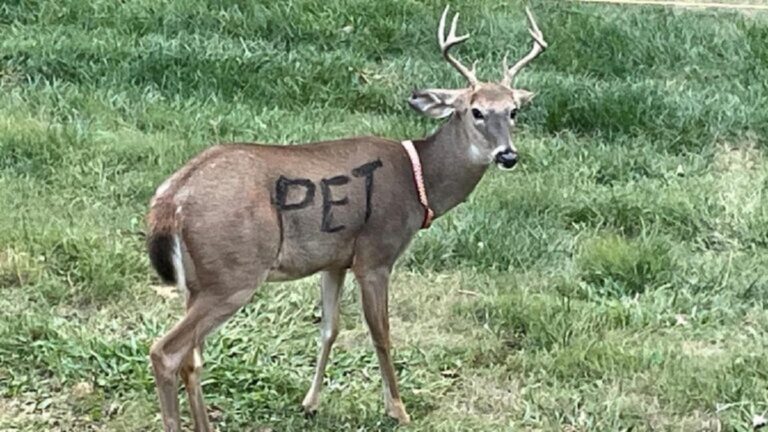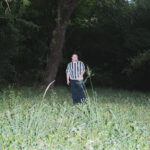In a curious encounter straight out of a quirky fable, a property owner in a rural Missouri town found himself face-to-face with an odd sight: a deer wandering through his land, wearing a brightly colored collar. To make the situation even stranger, the word “pet” was painted on the animal’s side. It was a scene that seemed more suited for a whimsical storybook than real life, leaving the property owner, and eventually the authorities, perplexed.
The Deer with a Collar
This unusual event took place in late September and quickly captured the attention of locals and authorities alike. The deer, estimated to be about two years old, was spotted wandering around the property with the collar around its neck, a sign that immediately raised questions. But the painted word “pet” was what truly sparked confusion. It was an unmistakable indication that someone had been trying to domesticate the deer, which is highly unusual for wildlife.

The Jefferson County Sheriff’s Office was notified and dispatched a team to investigate, but by the time they arrived, the deer had vanished, adding to the mystery. What prompted someone to treat a wild animal like a pet? Theories began to surface, with some speculating that the deer was either intentionally or unintentionally being raised in captivity, perhaps as part of an ill-advised attempt to domesticate it.
The Theory of Domesticity
The Missouri Department of Conservation (MDC) weighed in, suggesting that the collar was likely an attempt to tame the animal, perhaps with the hope of keeping it as a pet. While it’s not uncommon for domesticated animals to wear collars, it’s a rare and concerning sight when the same is seen on a wild creature like a deer. The MDC expressed concerns about the potential risks the animal could face if it continued to interact with humans or lived outside its natural environment.
Scott Corley, a wildlife protection officer with the MDC, raised alarms about the deer’s well-being. The presence of the collar, along with the fact that the deer had been spotted near human habitation, was worrying. Could this animal, which should be roaming freely in the wild, now be at risk due to human intervention?
The Growing Concern for the Deer’s Health
As the news spread, there was increasing concern about the deer’s safety. The collar itself could pose a danger if it was too tight or caused the animal distress. But the bigger worry was about the animal’s long-term survival in the wild. Wildlife experts, including Corley, expressed fears that if the deer had been domesticated, it might struggle to survive without human assistance.
Adding to the concern, the MDC issued a reminder to the public about the dangers of human interference with wildlife. One of the key messages was the importance of allowing wild animals to remain wild, especially in the case of deer. The department also pointed out the growing concern over Chronic Wasting Disease (CWD), a fatal neurological illness that affects cervids, including deer, elk, and moose. The MDC stressed that not only is it harmful for animals to interact with humans, but it also poses a health risk to people.
Why Wild Animals Should Stay Wild
The incident also highlighted a critical point that the Missouri Department of Conservation was quick to emphasize: wild animals, particularly deer, are not suitable for domestic life. “Deer should not be treated as pets, and taking them out of their natural habitats can be damaging both to the animals and to humans,” they warned. The MDC’s statement serves as an important reminder that wildlife should be left undisturbed and allowed to thrive in their natural environment.
There are also concerns about the deer’s behavior. As Corley explained, a domesticated deer could become aggressive, especially during mating season, when even typically peaceful animals can become unpredictable. There’s a real danger in treating a wild animal like a domestic one, and it’s important to remember that wild animals have instincts and behaviors that can’t be simply erased by a collar or a paint job.
Efforts to Help the Deer
In response to the situation, the MDC has been working to safely capture the deer and remove the collar. The goal is to release the animal back into the wild where it can continue to live as it should. It’s a delicate process, but the priority is to ensure the deer’s safety and well-being.
For now, this strange encounter serves as a reminder of the fine line between humans and wildlife. As much as we may want to bring the beauty of nature closer, it’s essential to respect the natural behaviors and habitats of wild animals. In the end, the best thing we can do for animals like this deer is to let them remain where they belong—out in the wild, free to live as nature intended.





